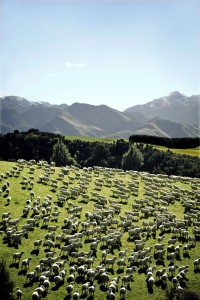How can we get more value from New Zealand beef and lamb exports?

The New Zealand Government’s has an ambitious goal of lifting total exports to 40 percent of GDP and doubling the value of primary exports by 2025. They have stated that this will involve developing stronger relationships with New Zealand exporters and supporting them to add and capture value from existing markets through supply chain integration, brand promotion and brand protection. New Zealand red meat exports play an important role in this as they represent 11% of total merchandise exports.
There is limited scope for increasing the volume of red meat production in New Zealand due to

land and environmental constraints. This means adding value to these exports is the only alternative. A significant proportion New Zealand’s red meat is still exported in commodity form and fails to achieve a premium for the attributes of its New Zealand origin. Changing this however will require a co-ordinated effort from government, exporters and producers.
Market access and promotion of the NZ Inc brand story can create opportunities for New Zealand exporters, however, capitalising on these initiatives requires companies to develop capabilities and strategies to market and deliver these products to demanding international consumers. These consumers are demanding greater variety and quality in the food they eat. They require a consistent year-round supply of high quality, safe food. They also want food that aligns with their own personal values, which includes credence attributes such as environmental sustainability, animal welfare and fair trade, as well as local and organic production.

To deliver this, it is necessary to have farmer suppliers who can produce the right quality of product when the market requires and who are committed to long-term supply relationships. Without this type of integrated value chain New Zealand will fail to break out of its reliance on agricultural commodities. This research has focused on several New Zealand exporters and their suppliers who have developed relationships with high-end retail customers and have a strategy in place to add value to their products.
Consistently meeting consumer demands is difficult within the constraints of New Zealand’s pasture-based agricultural production systems, as production volume and product specifications are highly dependent on climate.
Read Full research publication